Creating The PERFECT Home Studio Setup: Your Ultimate Guide
Let’s face it.
Setting up your very own home studio setup can be confusing.
When you are a beginner, everything seems complicated and over your head. Your mind quickly gets filled with tons and tons of studio components that you don’t even need.
When you see videos done by professionals, you’ll notice that their studios have an abundance of expensive gear and gadgets. Believe it or not, they didn’t always have such a high-end studio.
As a beginner, you don’t need an expensive studio to start making good tracks. A HUGE myth in music production is that if you don’t have top-of-the-line equipment, your tracks will suck.
Today I’m going to be telling you about the most essential equipment you should start out with.
Please note:
If you’re on a tight budget, I recommend starting off with just a DAW, a computer, and a pair of headphones (they don’t have to be studio grade).
On the topic of computers, we have written both on the best laptops for musicians and the best desktop computers for musicians.
Before you spend any significant amount of money on your studio, you should learn the basics of how digital music production works. Then you can go ham on buying studio toys.
What you’ll learn from this article:
- The DAW – We’ll find out what a DAW is and which ones are the best. I’ll even show you how to (legally) download a DAW for free.
- The Speakers/Headphones – We’ll talk about the difference between studio monitors and headphones for music production. I’ll give you some recommendations as well.
- The Audio Interface – It’s worth talking about what an audio interface is and whether you should have one or not. We’ll be going over that.
- The Gadgets – My definition of studio gadgets/toys are anything such as midi controller, keyboards, and other additional hardware/software you can buy to expand your experience.
Let’s begin!
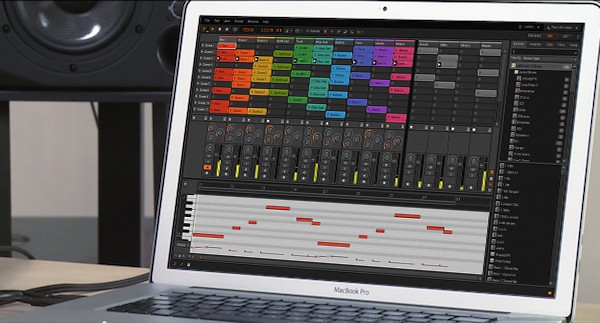
The DAW
The most important element of a home studio setup is a DAW.
So what does it stand for? The answer is Digital Audio Workstation.
Basically a DAW is a type of software designed to help you produce music. It will let you record live instruments, lay-out midi for virtual instruments, and much, much more.
Some examples of popular DAWs are Bitwig(my #1 recommendation), Ableton, FL Studio, and Logic Pro X.
I wouldn’t really bother with any DAWs outside of those. Those are the DAWs that I have personally tested and had experience in.
Why I chose Bitwig
 I started out as a Logic Pro user. It’s a nice DAW, but I migrated to FL Studio. FL Studio is another option that’s great, but I eventually ditched it for Ableton Live.
I started out as a Logic Pro user. It’s a nice DAW, but I migrated to FL Studio. FL Studio is another option that’s great, but I eventually ditched it for Ableton Live.
Ableton was my choice DAW for a while. It’s an excellent piece of software! It allows you to compose music fast, has a great sampling engine, and allows live performance.
Bitwig is a newer DAW. It hasn’t been out for that long and I was hesitant to try it.
The first time I gave it a go, I was still dubious of its worthiness. After around an hour of producing tunes with it, I was hooked.
A lot of the things that Ableton did fast were completely streamlined. Everything from switching tools to drawing midi notes was much faster.
All my VST plugins are supported. Maybe it’s just a placebo, but I also notice my virtual instruments (such as Serum, Massive, Sylenth1, etc) are loading MUCH quicker!
The best part about Bitwig Studio is that it’s more affordable!
Ableton costs an arm and a leg for their suite version. FL Studio costs over $700 for their full version with perks.
You can check out Bitwig over at Plugin Boutique to learn its current price.
The Speakers/Headphones
Like I mentioned in the introduction, you can start producing music with normal headphones if you’re on a budget.
Once you’re ready to upgrade to a more serious option you can either purchase:
- studio monitors, or
- studio headphones
Please reference my graphic on Studio Monitors vs Headphones to get a more clear idea on the differences.
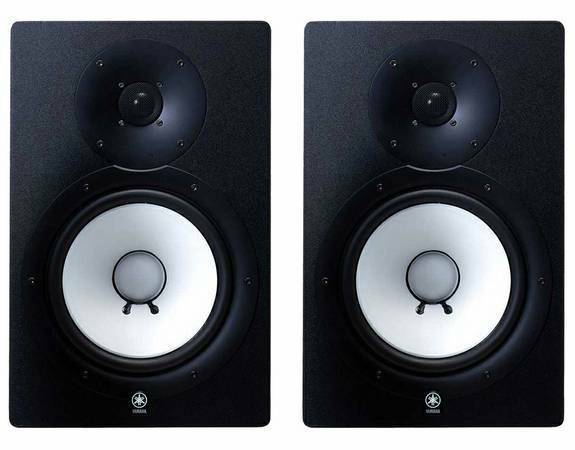
Studio monitors
Studio monitors are medium-to-large sized speakers. They ARE NOT designed to be “bass boosted“ or have any enhancements.
Studio monitors have a flat sound quality. That just means that the sound coming out of the speaker is unaltered.
Consumer speakers usually are bass boosted or treble enhanced. The sound coming out of those speakers would be inaccurate compared to studio monitors.
A flat sound is important because it gives you a better idea of how your track will transfer to other sound systems.
My top 5 Studio Monitor choices:
- KRK RP5 – Most producers start out with a pair of Rokkit 5s. They cost $150 per speaker. Their mids and high are nice and clean, but the lows are a bit weak. That can be fixed down the road by purchasing a studio subwoofer.
- JBL LSR305 – If the absence of bass from the KRK RP5 is going to be an issue for you, checkout the JBL LSR305 studio monitors. They cost the same price per speaker and simply sound amazing.
- KRK RP8 – I like KRK’s products, so I thought I’d include the RP8 on this list. If you don’t mind spending $250 per speaker, it’s a good step up.
- Yamaha HS8 – If you’re looking for the best pair of studio monitors that will last you for years, take a look at the Yamaha HS8. They cost $350 per speaker but are well worth it.
What studio monitors to STAY AWAY from:
Ok. If you google “best studio monitors”, a lot of crap results will come up.
You’ll find plenty of sites that promote terrible studio monitors just because they sell well.
My recommendation is to stay away from studio monitor pairs that cost $100. That super cheap deal might be extra tempting, but let me warn you, they are no better than cheap computer speakers.
Stay away from monitors such as the:
- M-Audio Studiophile – These monitors are the holy grail of cheap, bad-quality studio monitors
- Behringer MS16 – These are literally just computer speakers with the label “studio monitors”.
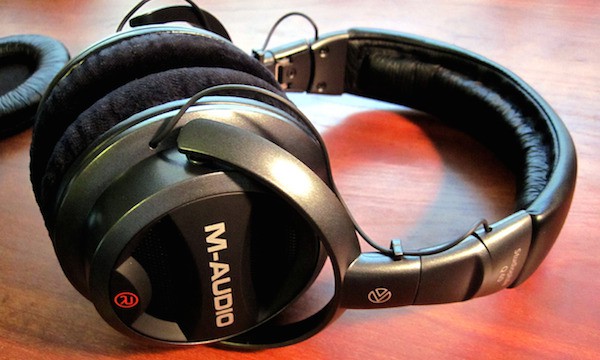
Studio Headphones
Studio Headphones are similar to studio monitors. They are designed to have a flat, accurate sound.
Beats by Dre are NOT examples of studio headphones. They are known to be bass-boosted for the listener’s pleasure. That’s NOT what you should look for.
My top 5 studio headphone choices:
- Audio Technica ATH-M50x – I can’t recommend these cans enough! They are affordable and sound great! If you can’t afford studio monitors right away, this is the way to go.
- Sony MDRV6 – These headphones are an improved version of the famous MDR7506 headphones from the 80s. They are known to be super reliable.
- Sennheiser HD 600 – These bad boys are a bit expensive(over $300), but are well worth it. They are commonly used by audio professionals around the world.
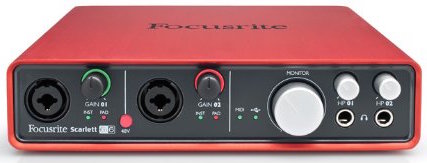
The Audio Interface
The audio interface isn’t completely necessary when you get started unless you’ll immediately be recording instruments or vocals.
An audio interface is basically a usb sound card that lowers latency when recording or playing midi instruments. They also have inputs for you to connect microphones, guitars, and other instruments.
The advantages of an audio interface:
- Takes a significant load off of your computer’s CPU
- Allows you to hear your microphones and instruments with zero latency as you play (no delay)
- Allows you to connect microphones and instruments
My top 5 choices for audio interfaces are the:
- Focusrite Scarlett 2i2 – This is the absolute best interface to start out with. It’s affordable and supplies so much quality.
- Steinberg UR44 – The UR44 is a very slim, but powerful audio interface. It costs just under $300.
- TASCAM US-1200 – This interface only costs $170. It has plenty of inputs if you are in a band and want a way to connect your instruments.
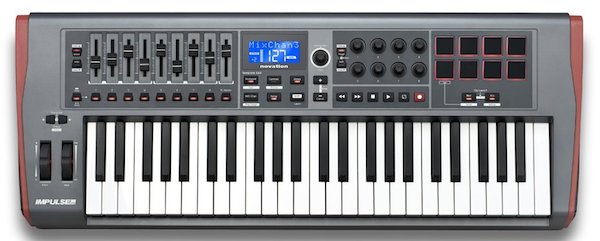
The Gadgets
One of the most joyous parts about being a music producer is purchasing gear and gadgets to make music with.
You have a LOT of choices.
Here are some of my top picks:
- Novation Launchpad – The Novation Launchpad exploded in popularity. The amount of creativity people have with this midi controller is insane!
- Ableton Push II – The Ableton Push II is kind of like the “Grown-up” version of the Launchpad. The Push lets you make entire songs without touching your computer. The Push II has many improvements over the first iteration.
- Moog Sub Phatty – For less than $1000, you can get your hands on an authentic Moog Synthesizer. This synth produces a warm analog sound that anyone can appreciate.
- Akai MPK249 – I’m a big fan of the MPK series of midi keyboards. The MPK249 is a 49-key midi keyboard/controller with drum pads, knobs, and faders.
Where to go now?
- Master List: The Best Audio Plugins
- The Quest For The Best MIDI Controllers
- The Best Audio Interfaces
- The Best Hardware Synths
- Lyric Writing Tips That Will Change Your Life
Final notes
I hope this article has helped you out and gave you a much clearer idea on what a perfect home studio setup is.
Thanks for reading!
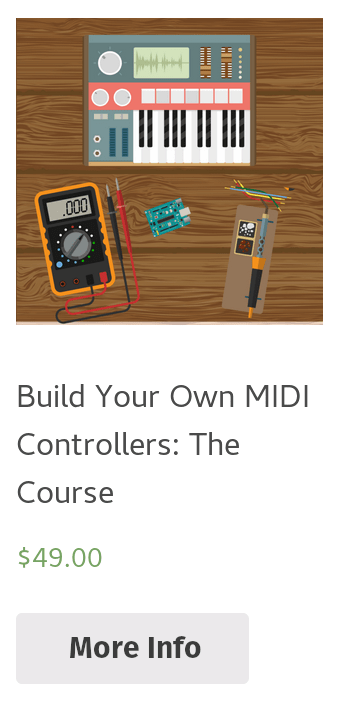
Leave a Comment
2 comments
Do you have a more updated/recent version of your Home Studio Buyers Guide? I have one (with expired links) from March of 2016.
PS I have a MacBookPro with a Focusrite Pro 14, a pair of JBL308’s and Logic Pro X (which by the way was only $200…would that not be the cheapest?) Would you say this is a fairly good start?
Hi, Dennis!
You didn’t happen to pick up at Home Studio Buyer’s Guide recently?
The current free books we offer are “The Digital Musician’s Field Guide”, “Music Production Mythology”, and “5 Tips For Marketing Your Music”.
Let me know if any of those interest you and I can send them over. Digital Musician’s Field Guide is basically a revised version of Home Studio Buyer’s Guide with some new information.
EDIT: Btw, that is a great way to start out! Congrats.
Cheers,
-Doug